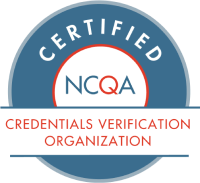Because Anthem Blue Cross and Blue Shield of California had inaccurate data in their provider directories, they overstated their physician networks during the Affordable Care Act coverage rollout in 2014. As a result, these insurers will have to pay out millions in refunds to members who incurred out-of-network costs because they relied on poor data in their flawed directories. To date, these refunds have added up to $38 million for Blue Shield of California alone. The state has also levied fines to both companies, through the California Department of Managed Health Care (DMHC), of over $600,000. What’s not talked about in these articles is the administrative costs incurred by the health plans that were required to process the refunds and manage members’ experiences.*
How bad was the data?
Last year, the DMHC released results of an investigation that found that more than 25 percent of the physicians listed on Anthem and Blue Shield of California’s directories were not taking patients in the Covered California health exchange or were no longer at the location the payers listed. Due to complaints from consumers, including those targeted by Blue Shield of California and Anthem, California lawmakers passed legislation stating that insurers must update their provider directories weekly.
How does this impact your organization?
The Centers for Medicare and Medicaid Services (CMS) have released 234 pages of new regulations to take effect January 2016. (The complete CMS letters are available here and here.) Issuers in the federally-facilitated Marketplaces and Medicare Advantage Organizations (MAOs) and their credentialing and provider management teams are facing substantial changes.
The most notable of these changes are the new CMS regulations around current and accurate online provider directories. Like the change implemented in California, these changes are a direct response to “complaints of directories including providers who are no longer contracting with the MAO, have retired from practice, have moved locations, or are deceased. Additionally, some provider directories contain the names of providers who, while still in the MAO’s network, are not open and available to new patients, but are not indicated in that way.”**
CMS regulations state that provider directories must:
- Disclose “the number, mix, and distribution (addresses) of providers from whom enrollees may reasonably be expected to obtain services…”
- “[M]aintain and monitor a network of appropriate providers that is supported by written agreements and is sufficient to provide adequate access to covered services to meet the needs of the population served.”
Additionally, the new CMS regulations require plans to:
- Develop “…a proactive, structured process that enables them to assess, on a timely basis, the true availability of contracted providers…”
- Communicate with their providers to determine their “availability and, specifically, whether they are accepting new patients, in addition to requiring contracted providers to inform the plan of any changes to street address, phone number, and office hours or other changes that affect availability” at least every quarter.
- Create a protocol to address inquiries and complaints related to denial of access to see a contracted provider and follow through to update the online directory accordingly.***
Enforcement of New Regulations
CMS will monitor compliance through three avenues: 1) a new audit protocol, 2) direct monitoring and 3) compliance actions. Incompliant directories and networks without adequate numbers of open providers accepting new patients will be subject to civil money penalty and enrollment sanctions.
The Bottom Line
Bad data is costly. Poor directory maintenance is an undeserved headache and cost for patients and breeds distrust between payers, providers and patients. Starting January 1, 2016, CMS will be able to regulate the effectiveness of directory providers and networks of MAOs and plans that participate in the federal exchange.
andros Makes It Easy
Provider data starts in credentialing and enrollment departments. At andros, we see this as an opportunity for the credentialing departments to repair communications and data flow between administrators, providers and provider directories. Tracking providers’ availability, locations, contact info and specialties doesn’t need to require a stack of paperwork, hiring hourly temps, or manually updating spreadsheets and legacy databases.
andros offers an easy-to-use interface that allows health plans and their affiliated provider groups to interact with provider data in real time. In this way, all the involved parties—including the practitioner, the provider group and the payer—are viewing up-to-date information that accurately reflects the reality of their networks. In addition, we give our clients the ability to control which providers and locations are displayed in their provider directories at a detailed level.
The updated CMS regulations reflect the demands of patients everywhere: they want to be able to access reliable information easily and readily. And at andros, we totally agree and choose to raise the ante: patients, providers and plans should all have the ability to access provider data and to update it without any stress.
—
Notes:
*Ayla Ellison. “California fines top insurers $600k for overstating physician networks.” Becker Hospital Review (04 November 12, 2015).
**From the CMS letter to MAOs.
***Found on page 134-136 of “Note to: Medicare Advantage Organizations…”
Source: New feed



